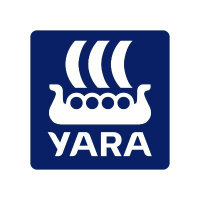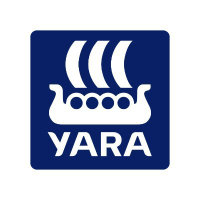
Yara International ASA
OSE:YAR


Utilize notes to systematically review your investment decisions. By reflecting on past outcomes, you can discern effective strategies and identify those that underperformed. This continuous feedback loop enables you to adapt and refine your approach, optimizing for future success.
Each note serves as a learning point, offering insights into your decision-making processes. Over time, you'll accumulate a personalized database of knowledge, enhancing your ability to make informed decisions quickly and effectively.
With a comprehensive record of your investment history at your fingertips, you can compare current opportunities against past experiences. This not only bolsters your confidence but also ensures that each decision is grounded in a well-documented rationale.
Do you really want to delete this note?
This action cannot be undone.

| 52 Week Range |
287.7
370.8
|
| Price Target |
|
We'll email you a reminder when the closing price reaches NOK.
Choose the stock you wish to monitor with a price alert.
This alert will be permanently deleted.
 Yara International ASA
Yara International ASA


 You don't have any saved screeners yet
You don't have any saved screeners yet

Good morning and welcome to Yara's third quarter results presentation. The presentation today will be by Yara's CEO, Svein Tore Holsether; and CFO, Thor Giæver. Shortly after the presentation today, there will be an audio conference call with an opportunity to ask questions. With that, it's my pleasure to hand over to Yara's CEO, Svein Tore Holsether.
Thank you very much, Silje. As Always, we will start with safety. And our performance continues to be at an industrial-leading level, with a low number of incidents.Our TRI rate has improved further in the quarter to 1.1 compared to 1.2 in the second quarter. But as you will also see in this graph, we did achieve lower during the quarter, and we have seen a worrying increase in incidents in September and into October. Most of these accidents were minor, but there was one very serious accident. And the one thing that all of them have in common is that they were avoidable. So this is a clear reminder that in Yara, safety must always come first. Our attention and efforts are needed on this every day from all of us. Our long-term ambition remains 0 injuries. Now let's take a look at the results. Overall, this has been another good quarter for Yara. Our returns improved year-over-year, but were down compared with the second quarter. And this is due to the write-down of our Salitre project, which we are now divesting and which was communicated back in August. So actually excluding this effect, our returns were up also compared with the second quarter. For the quarter in isolation, our return on invested capital was 4.1% or 13.7%, excluding the Salitre impairment. The underlying improvement in returns reflects higher prices for all nutrients and also the resilience of our business model. The gas price spike in Europe meant that we had to curtail significant ammonia capacity towards the end of the quarter. And right now, we have curtailed around 40% of our European ammonia production, including both scheduled maintenance and market-driven curtailments. The entire European nitrogen industry is affected with curtailments at a similar level to Yara's, and this has also contributed to higher nitrogen prices globally. A key part of Yara's resilience is our high operational flexibility, especially for our nitrate and NPK plants, where we have the ability to switch between producing or sourcing ammonia before we upgrade that to fertilizer. And this allows us to curtail unprofitable ammonia production and replace it with sourcing from Yara's plants outside Europe and from our leading global ammonia trade and shipping network. The impact on finished fertilizer production has, therefore, so far been limited, but we're closely monitoring the situation. We're committed to supplying our customers in a financially responsible manner. The flexibility and resilience of our business model allows us to operate and perform well also in a challenging environment that we face today. Our strategy also remains very relevant, working collaboratively to transform the global food system with more holistic and sustainable food solutions, helping farmers increase their yield and reduce their emissions. It includes ramping up our business within clean ammonia to enable the hydrogen economy, which we are confident will contribute to a more robust and sustainable energy future. I now hand over to Thor to take us through the financials in more detail. So over to you, Thor.
Thank you, Svein Tore. As Svein Tore already mentioned, we consider our performance good this quarter. Earnings and returns are up, while operating capital has increased in absolute terms, reducing the cash from operations by $750 million for the quarter. . EBITDA was up 37%, and I'll come back shortly for a closer look at the development for EBITDA. Underlying earnings per share also increased in line with the EBITDA performance while reported net income decreased due to the Salitre impairment and currency translation on debt positions. Our return on invested capital also continued to increase, and our 12-month rolling ROIC is 10.6%, excluding the Salitre impairment. Operating capital increased mainly due to a seasonal reduction of prepayments in Brazil, and we communicated this last quarter and also, increasing inventory values as a result of the higher prices we're seeing in the market. Our net investments last year were positive due to divestment proceeds. While this year, they are at a more normal level. On an underlying basis, they're slightly above third quarter last year. And for the full year, we expect to end at approximately $1.1 billion of investments, a reduction of about $200 million, which is phased into 2022. So taking a closer look now at the moving parts on EBITDA. First of all, the volume. As you can see, our overall variance was almost flat. We had somewhat lower nitrate and urea deliveries, while NPK deliveries were in line with a year ago. On the margins, we had approximately $650 million of positive price effects, mainly for urea. That was up about 60%, but with increases across the board for all products. This strong price development more than offset the gas cost increase of $410 million. Although our price and margin development has been strong overall, the rapid price increases have also given us some negative exposure effects, $39 million in the quarter for inventory positions and sales commitments, where our cost of sales exceeded agreed selling prices. On fixed costs, as communicated earlier, we reallocated approximately $100 million from 2021 CapEx to fixed costs in order to ramp up our farming solutions and other strategic activities. And the fixed cost development from quarter to quarter will vary depending on both seasonal and operational factors. But overall, these activities are progressing according to plan. Looking at the results by region, our non-European regions have contributed strongly as they benefit from higher product prices while their feedstock cost increases have been limited. Industrial Solutions saw the strongest impact from higher natural gas prices in Europe, partly offset by higher deliveries as their demand remains strong. Temporary surcharges were implemented towards the end of the quarter, which will offset the impact of higher feedstock going forward. In Region Europe, higher prices more than offset lower deliveries and increased feedstock costs. Deliveries decreased 9%, as buyers were initially reluctant to take positions early in the season. However, we saw demand pick up in September. For global plants and operational excellence, higher nitrogen and phosphate prices more than offset increased energy costs, and their internal finished product deliveries increased, thanks to improved production reliability. For clean ammonia, earnings were up, mainly reflecting increased commission income due to higher ammonia prices. Our cash earnings this quarter have been more than offset by higher operating capital in addition to planned investments and dividend payments. Our net debt-to-EBITDA ratio at the end of third quarter was $1.31. And adjusting for the higher than normal prepayment level, our pro forma net debt to EBITDA is 1.4, which is temporarily below our mid- to long-term target range of 1.5 to 2. So we will consider further cash distributions in the coming quarters, in line with our capital allocation policy. So now let's take a look at our longer-term operational improvement efforts. On production, we had a continued positive trend for finished products, up almost 18% compared with third quarter and lifting our 12-month rolling performance by approximately 100,000 tonnes. For ammonia production and energy efficiency, the short-term development has been negative due to both reliability issues and curtailments. For energy consumption, the -- in the near term, the performance there is closely tied to our ammonia production reliability. On fixed costs, as mentioned, we are overall in line with our guidance and we had continued strong progress on operating capital days, and this excludes the prepayments I mentioned earlier. And of course, absolute, as mentioned, because of higher prices, we are higher on operating capital. So at this point, I'd like to hand you back to Svein Tore for his closing remarks.
Thank you very much, Thor. We're looking at a very challenging situation now and maintaining European nitrogen production is essential to support global food security. We're therefore concerned about the global impact of European natural gas prices, especially for the world's poorest regions. Europe represent about 15% of the global nitrogen production, and nitrogen is the most important crop nutrition. Critical to maintaining agricultural yields and lower nitrogen application would have a negative impact on food production. It is estimated that nitrogen fertilizer provides food for around half of the world's population. The nitrogen curtailments in Europe come at a time where the food supply situation is already critical in the world's poorest regions. And the situation is already grave as a result of COVID and soaring food prices, and this comes on top. And according to the UN World Food Program, lack of food threatens the lives or livelihoods of a record 270 million people this year. More than 800 people go to bed hungry every night, that's 9% of the world's population. So the nitrogen curtailments in Europe now represent an additional concern for global food security in a situation with already tight supply. As mentioned, earlier, Yara's strategy is all about working collaboratively to transform the global food system. Nowhere is collaboration needed more right now than in the area of global food security. We have already demonstrated what is possible through collaboration. The 2020 collaboration with the World Food Program, the Action Africa initiative, where fertilizers provided by the program secured food supply for 1 million people for 1 year in Southern and Eastern Africa whilst also improving farmer livelihoods. So no individual company or country can solve global food security concerns alone. A global coalition is needed. So Yara calls on authorities, international organizations and food chain companies to work together to secure global food supply and create a resilient food value chain for the future. We should use the current situation as a catalyst for accelerated conversion to green and to restructure the food value chain in such a way that it becomes equitable, resilient and fair for future generations. And then I will hand back to Silje.
Thank you, Svein Tore. So just a few closing remarks for me then to remind people that we have a conference call starting in approximately 45 minutes at 1:00 p.m. also time if you want to ask questions. If you don't have the details to this, you will find it on our Web page, yara.com, under Investor Relations. With that, thank you for attending the presentation, and have a nice day.